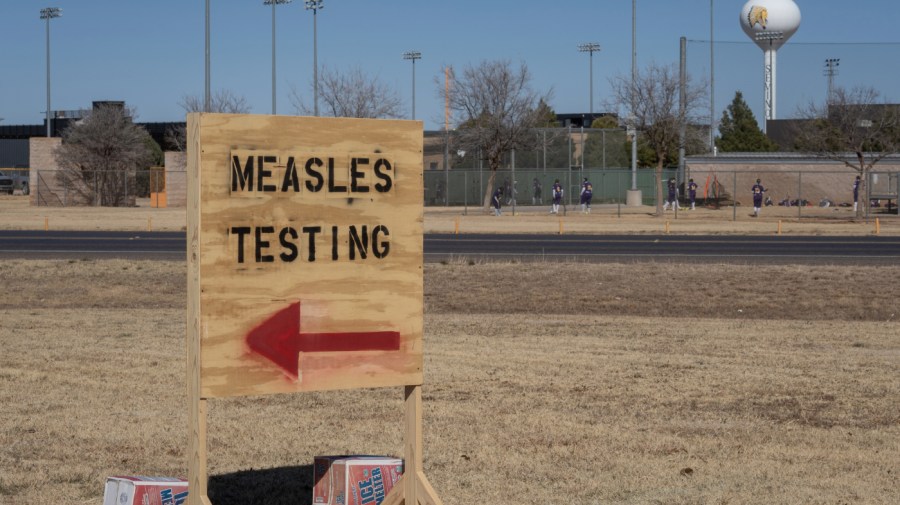About 7 out of 10: poll

In a new survey, more than two-thirds respondents say they are concerned about the incidence of ham in Texas and New Mexico.
According to a survey by the University of Quinnipiak on Thursday, 695 percent of respondents say they are concerned about the outbreak, 36 percent those who say “very” concerned “and 5 percent of those who say” somewhat “concerned.
Meanwhile, 15 percent of the respondents said that “they are not so concerned” and 14 percent say they are “not concerned at all.”
The survey came as severe outbreaks increased in West Texas. Until Tuesday, Texas confirmed 223 ham cases from January to January – 198 confirmed cases last week.
At least 29 Texan – most children – have been admitted to the hospital after the virus agreement. And an uncovered school-year-old child died. The second uninterrupted death is under investigation in New Mexico, where five cases have been confirmed. Oklahoma reported his first two cases on Tuesday.
Texas outbreaks have spread to a region with a large community of Menonite, many of whom reject the conventional drugs such as vaccines. The Church itself does not have a vaccine opposition. This outbreak also comes between the wide rise of vaccine skepticism.
Most children entering the kindergarten in US public schools require ham, mamps and rubella (MMR) vaccines, but Texas allows children to get discount from the requirements for religious or conscience. As a result, the percentage of children exempted from Texas rose from 5.7676 percent in 2021 to 2.22 percent in 2021, the Associated Press said state information.
In Gains County, where more than two-thirds of the Texas cases are cases, about 14 percent of schoolchildren came out of at least one necessary vaccine in the 2023-24 school year, according to AP. The K -12 vaccine exemption rate in a school district is reported to be 47.95 percent.
Support to adjust the vaccine discount among schoolchildren has increased over the past decade, even experts have pointed to strong relationships between lower vaccination rates and repetitions of the disease.
Most respondents in the quinipiak survey, 57 percent, children who have not received the standard vaccine should not be allowed to join school and other child care facilities. More than third, 35 percent, say they should be allowed.
According to the survey on March 27, the respondents have a much higher percentage – Percent 5 percent – said that obsolete children should not be allowed in school and child care facilities, and 20 percent said they should be allowed.
“There is clear concern over the opposition to the students’ voting center analyst Tim Malloy at the University of Quinnipiak.
“But or not, no, a decade ago when voters were not willing to open the door to the classroom, there was a big change,” he added.
Disease Control and Prevention Centers (CDC) March March warned that “more cases are expected because of this outbreak rapidly expanded.”
The CDC has added, “Due to the US immunization and surveillance programs and outbreak reaction capacity,” the CDC has added, “the CDC has added,” the CDC added.
March 6-10 survey includes 1,198 self-contained registered voters and it contains 2.8 point errors.



Post Comment